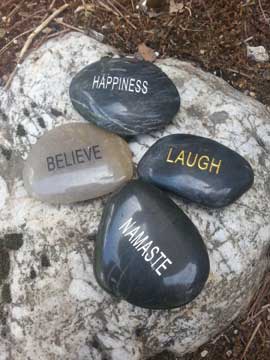Deepali Barapatre
This is the last part in the series on mindfulness
We are at the end of our mindfulness journey together. Your mindfulness journey doesn’t end here; it begins. Use these activities as a toolkit to explore, play, and find the one that calls out most to you and your children. Come back to your favourite activities whenever you feel out of balance in your life.
Breathing exercise for the week
Guided meditation
When I began meditating, sitting even for two minutes seemed like an insurmountable task. Even after years, I can only do 10 minutes of unguided meditation, but I can very easily be lost in over 30 minutes of guided meditation. Guided meditation is a practice where a trained professional guides you through meditation – in person or via video/audio. There are incredible resources available online in the form of YouTube videos and apps. Some of my favourite resources are ‘Headspace for Kids’ and ‘Smiling Mind App.’
“It’s almost as though meditation was designed for kids. They just ‘get it’ – there is this elasticity and freedom in their minds which allows them to be present in the moment and free from any external thoughts or pressures. By introducing meditation and mindfulness at an early age, not only can we build on this and help nurture their mind development, but we are also making meditation simple and accessible.” – Andy Puddicombe, Co-founder, Headspace
Sunday
Balloon release
Things needed: A balloon and a marker.
You can do two versions of this activity, depending on the state of your child. The first version is sending a message to the universe on a balloon and the second version is letting go of things that are bothering you.
• Depending on which version you want to do with your children, talk to them about what they want to write on the balloon.
1. In the first version, ask them what they are currently working on that they would like to achieve. Ask them to write their list on the balloon as if it has already happened. For example, I am good at math, or I am on the basketball team.
2. In the second version, ask what are the things that are bothering them. Ask them to write on the balloon to say goodbye to those things, such as a fight with a friend or a bad score in the school test.
• Blow the balloon and write your thoughts on them.
• Let it go in the air and see it fly away.
• Ask them how they felt while doing this activity?
Monday

Heartbeat exercise
• Ask the children to jump up and down for one minute.
• Ask them to sit down, close their eyes, and place their hand on their heart.
• Feel the heart beating and their breath.
• Ask them what else did they notice in their bodies.
1. Did the heartbeat slow down?
2. Where else can you feel a pulse? On your neck? On your wrist?
• Notice your heartbeat when you are feeling angry or anxious. Use your breath to slow down your heartbeat. Notice if there is any change in the feeling.
Tuesday

Affirmation stones
The purpose of this activity is to have a visual reminder for the affirmations you have set yourself and connect with your affirmations.
Things needed: Small flat rocks and paint
• Get some smooth flat rocks you can paint on. You can also pair this with the mindful walking activity we did earlier.
• You can use Tempera or acrylic paint for this.
• Wash the rocks. Use newspapers to prepare your art zone.
• Paint the rock with a base colour.
• Once the paint is dry, write or draw your affirmation word on the rock. For example, courage, grit, resilience, kindness, etc. (I encourage the adults to do this with the children.)
• Add decorations around your affirmation word.
• Keep the rock somewhere special where you can see it every day.
• Hold the rock to harness the power of your positive thoughts.
Wednesday
Mindful smelling
Things needed: Five scents of your choice – candles, fresh herbs, tea, chocolate, fruits, vanilla, etc.
• Ask the children to close their eyes.
• Place five different scents in a bowl or a jar.
• Bring a scent close to them and invite them to smell it.
• Ask them to tell you how they feel as they smell.
1. What is that scent?
2. How is it different from the other one?
3. Does it evoke any memory?
Thursday
What’s outside the window?
I have been living in my current house for the past 10 years. Things I observed outside my window when I slowed down (or the pandemic made me)
• We have copper pods that bloom in summer and turn red near the monsoon.
• We have parakeets in our residential society.
• The 100-year-old banyan tree looks less scary than what I imagined as a child.
• There are other flowering trees whose names I don’t know.
Can you imagine it took me 10 years just to notice what’s outside my window?
Things needed: Window to look out from (of course!), paper and art material.
• On your drawing sheet, draw a frame for your window.
• Draw all the things that you see outside the window.
• Spend time noticing the little things.
• Colour it in!
• Ask your children, ‘What new things did they observe today?’
Friday
Walking meditation
(Take COVID-19 considerations while performing this activity.)

Walking has always brought peace and comfort to me, and I believe children can also experience the same through mindful walking.
• Set an intention for a mindful walk.
• First, tell the children it is an experiment, and we will do it only for five minutes.
• Ask them to walk silently for five minutes.
• On the walk:
1. Notice your breath.
2. Notice your feet touching the ground.
3. Walk slower than you usually do.
4. Every time your mind starts wandering, bringing your attention back to your feet and your breath.
Saturday
Painting your breath
Things needed: Art supplies and paper
• Tell the children that we will paint our breath.
• On a piece of paper, move your pencil/brush up as you inhale and fill your lungs.
• Move your pencil/brushe down as you exhale, releasing air.
• Painting your breath helps visualize the breathing pattern.
• Afterward, children can analyze their breath and look for patterns in changes.
“The most precious gift we can offer others is our presence. When mindfulness embraces those we love, they will bloom like flowers.” ~ Thich Nhat Hanh, Vietnamese Thiên Buddhist monk and peace activist.
That’s why I say ‘Enjoy the present of being present!’
The author is a passionate educator who believes in nurturing good human beings before anything else. She works as a Programme Officer at Udaan India Foundation where she leads the Children’s Programmes. Udaan India Foundation is a Mumbai-based not for profit organization working with children and youth from low-income communities in the field of education. She can be reached at
